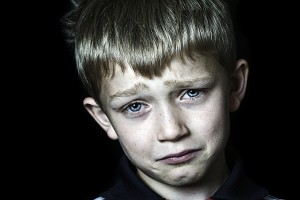Frequent and occasional bullying were both associated with a higher risk for depression, psychological distress, suicidal thoughts, and anxiety disorders in middle age.
Problem: Getting shoved on the playground, or swirlied in the toilet, called mean names behind your back, or to your face—bullying takes many forms (even more of late thanks to the Internet), and is an unfortunate part of life for many children. Some have argued that it’s just an unpleasant rite of passage, but many others, including government officials, feel otherwise. Some kids may “bounce back,” but we hear many stories of bullying gone too far, of teasing that ends tragically. And research shows that bullying victims have higher rates of self-harm, anxiety, and depression during childhood and adolescence.
A new study published in the American Journal of Psychiatry, out of King’s College London, provides more evidence that bullied kids might not totally bounce back, that their health, relationships, and even economic status may be at risk even into middle age.
Methodology: The researchers looked at data from the U.K.’s National Child Development study, on more than 18,000 people who were born during one week in 1958. Those children were followed up with at ages 7, 11, 16, 23, 33, 42, 45, and 50. During the 7-year-old and 11-year-old check-ins, the children’s parents reported whether their children were bullied never, sometimes, or frequently. While it’s possible that some children were being bullied without their parents’ knowledge, the study notes that “reports of bullying victimization from mothers and children have been shown to be similarly associated with emotional and behavioral problems.”
Results: Twenty-eight percent of the children studied had been occasionally bullied, and 15 percent had been frequently bullied. Bullying was more common among male children, and those whose parents were less involved, or had “manual occupations.”
This bullying (both occasional and frequent) was associated with poorer health later in life—victims had more psychological distress at 23 and 50, and were at higher risk for depression, suicidal thoughts, and anxiety disorders at age 45. The risk levels were similar to those for children who “had been placed in public or substitute care… or who reported multiple childhood adversities.” Bullying victims also rated their health more poorly and were more likely to have poor cognitive functioning at 50.
Being bullied was also associated with having lower education levels, a higher likelihood of being single at 50, spending less time with friends, and lower perceived life satisfaction.
Other than spending less time with friends, these associations stayed significant, even when the researchers controlled for other factors like childhood IQ, social class, childhood adversity, and the tendency to internalize or externalize behavior problems.
Implications: These findings show that the experience of being bullied, rather than being left behind when the person leaves school, may instead linger and affect the victim’s life well into middle age.
“Estimates of the associations between bullying victimization and adult outcomes were small but robust to adjustment for a number of key confounders,” the researchers write. “The findings are compelling in showing that the independent contribution of bullying victimization survives the tests of time and confounding. It is unlikely, of course, that bullying operates in isolation to create such lifelong adversities. Future studies should examine bullying victimization in the context of other forms of childhood abuse and identify pathways leading to poor adult outcome.”
There may well be other factors at play, but it seems that bullying is at least a risk factor for many negative outcomes as people grow older.
This article first appeared on The Atlantic on 23 April, 2014.























